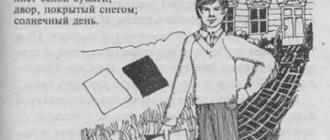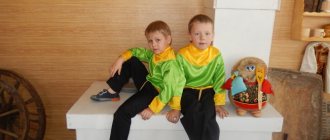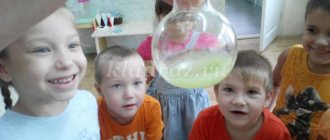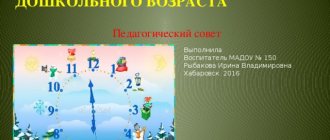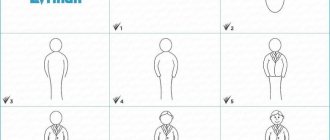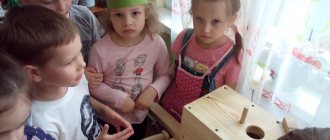Children love all kinds of experiments; everything around them is amazing to them. Often the desire for research takes on a dangerous character - children, not knowing the laws of physics and chemistry, are happy to mix the most incompatible substances. Creative energy can be given an outlet in kindergarten: interesting experiments with water for children 5-6 years old will be interesting, and most importantly - safe.
Things to consider
The teacher’s idea to conduct several experiments for children 5-6 years old that clearly show the properties of water requires a little preparation before its implementation. This is especially true for the duration of the activity - children in kindergarten are unlikely to be able to concentrate for more than half an hour; long classes tire them. Let the program include only three experiments with water - but interesting ones, and meeting the following requirements:
- Possibility of group participation . That is, the teacher shows, and the children, united in 4-5 people, enthusiastically repeat;
- Safety . The requirement comes from the first point - children 5-6 years old are quite likely to spill water, drop containers for experiments, etc. Therefore, work with hot liquids, fire, and harmful substances is excluded;
- Availability of change of clothes . Most likely, it won’t be possible without small puddles. A baby who accidentally wets his clothes may get sick. For the same reason, experiments are carried out exclusively in a warm room without drafts.
It is possible that one of the children will suddenly want to try the water prepared for the experiments - it is good if it is boiled.
Experiments with water in kindergarten are a great way to explain to children the basics of its physical properties in an interesting and accessible way, so do not forget to comment on what is happening on the desktop.
Experimenting with water in the middle groupexperiences and experiments (middle group) on the topic
Experiments with water and its properties with children in the middle group.
A Chinese proverb says:
“Tell me and I’ll forget, show me and I’ll remember,
let me try and I’ll understand.”
Goal: Expanding ideas about water and its properties. Objectives: To give children an idea about water, its properties (smell, taste, color). Develop the ability to compare and analyze. Develop logical thinking. Activate children's vocabulary.
Preliminary work: Making riddles about water, looking at illustrations depicting water, talking about water.
Equipment: Two disposable cups for each child, gouache, brushes, granulated sugar, salt, buckwheat, sand for each participant in the experiment.
For the teacher: a spoon, a three-liter jar, cling film, a picture.
1. Experience “Transparent water”
The teacher shows the children clean water in a transparent glass.
Educator: Guys, what kind of water do we have in our glass? (children's answers) Experience: Place an object in a glass of water. Is he visible? Yes. Conclusion - the water is transparent. Educator: Let's take a closer look at what kind of water it is? What color is it? What colors do you know? (children's answers) Water is not like any other color, water has no color, which means it is colorless. Let's repeat the word “colorless” in unison.
2. Experience “Water changes its color”
Educator: But we told you that water is a magician, it turns out that it can change its color. Experience: Each of you has a brush and gouache. I suggest you wet the brush, dip it in the gouache and stir the clear water in your glasses with the brush. What happened to the water? (answers) The water changed its color: for some it became yellow, for others green, red, blue. We learned that water can change its color.
3. Experience “Water has no smell”
Children are given new glasses with clear, clean water. Educator: Let's smell the water. What does she smell like? (answers) Clean water, guys, doesn’t smell like anything. The water is odorless. What do you think, does water have a smell? (answers) What do you think the water will smell like if I put currant jam in it? (answers) The teacher puts jam in his glass of water, stirs it and gives it to each child to smell. What does the water smell like? (answers)
4. Experience “Water has no taste”
The children have cups of clean water on their tables. Educator: Guys, do you think water has a taste? (answers) Let's remember what tastes we know? Candy, what does it taste like? (answers) What does lemon taste like? (answers) Now try some water. What does it taste like? (answers) Pure water has no taste, it is tasteless. Let's repeat the word "tasteless" in unison.
5. Experiment “Some substances dissolve in water, others do not dissolve”
Educator:
Take two glasses of water. Put regular sand in one of them and try to stir it with a spoon. What happens? Has the sand dissolved or not? Let's take another glass and pour a spoonful of granulated sugar into it, stir it. What happened now? In which of the cups did the sand dissolve? Remind children that they are constantly stirring sugar in their tea. If it did not dissolve in water, then people would have to drink unsweetened tea.
We put sand at the bottom of the aquarium. Does it dissolve or not? What would happen if granulated sugar, rather than regular sugar, was placed on the bottom of the aquarium? What if there was granulated sugar at the bottom of the river (carry out a similar experiment with salt, cocoa, buckwheat)?
6. Experiment 3. “Ice is solid water”
The children have cups with pieces of ice on their tables.
Educator:
Guys, let's monitor the condition of the ice cubes in a warm room. What do you think will happen to the ice? (children's answers).
Notice how the ice cubes gradually become smaller. What's happening to them? (children's answers).
It is important that children pay attention to the fact that pieces of ice that differ in size will melt over different periods of time. Conclusion: ice is also water.
7. “Natural Magnifying Glass” experiment
On the table there is a three-liter jar, cling film, a glass of clean water, and a picture.
Educator:
Guys, do you know a way to enlarge a picture so you can look at it without a magnifying glass?
(children's answers)
Use glass objects carefully.
Children, under the guidance of a teacher, put the picture in a three-liter jar.
The neck of the jar is tightened from above (but not pulled with cling film, but pressed down so that a small container is formed). The film is tied with a rope and an elastic band, and water is poured into the recess. The result is a puddle through which you can see the smallest details of the image.
The same effect can be achieved if you look at an object through a jar of water, securing it to the back wall of the jar with transparent tape.
Recording the results of the experiment.
Conclusion. Water has the property of magnification.
Educator: Guys, water really is magic! Let's remember, what is clean water like? (answers) 1. Odorless; 2. Without color (colorless); 3. Without taste (tasteless);
4. Ice – hard water;
5. Some substances dissolve in water, others do not;
6. Water has the property of magnification. But we have found out that water has the ability to change its color, smell and taste - therefore water can be called magical. Did you like doing magic? (answers) Next time we will come to the laboratory again and find out what else the water sorceress can do.
Experience with water and oil
You will need some simple props - two stacks and an old plastic card. Fill one stack to the very edges with water, the second with oil.
As you can see in the photo, then one container is tightly covered with a card, turned over, and placed on another.
It doesn’t matter which liquid is on top - move the plastic slightly to the side and they will slowly swap places due to the difference in density.
Children 5-6 years old will certainly enjoy such a simple and effective experience.
colorful lamp
Such spectacular experiences with preschool children are especially popular.
- Mix half a glass of sunflower oil with the same amount of water, add dye.
- Take an aspirin tablet and drop it into the bottom of the container with the resulting mixture.
The aspirin begins to fizz and mix the oil and water, and the paint droplets begin to dissolve. A very beautiful sight. For illumination, you can direct the beam of a flashlight.
Experience with arrows
Water refracts light, so objects in it appear larger than they really are. You can verify this by putting a tennis ball, for example, in a jar of water. But it is much more interesting to carry out the following experiment: draw three arrows on a landscape sheet as shown in the photo, and place it vertically.
Next, place a transparent (in kindergarten it is better to use a plastic) jar in front of the sheet and gradually fill it with water. And a miracle will happen - the arrows will change direction!
By moving the jar along the sheet, you can fully appreciate the visual effect.
++
Rainbow water
To make experiments with water more entertaining for preschoolers, it is better to paint the water in different colors using ordinary watercolor paints. For the next experiment you need paints, granulated sugar, a glass glass, water, a syringe, and four small glass cups.
- There is no need to pour sugar into the first glass, half a teaspoon of sugar should be thrown into the second, a full teaspoon of sugar into the third, and one and a half teaspoons into the fourth.
- Now you need to add water to each glass and stir the sugar.
- For the first, take red and mix it, for the second - green, add black to the third, and add yellow to the fourth.
- Then you need to take a syringe and draw water from the first glass of red water without sugar. Pour the contents of the syringe into an empty prepared glass.
- Next, using a syringe, draw green water from the second glass, in which half a teaspoon of sugar is dissolved; the syringe must be lowered to the bottom of the glass with the red water collected and slowly release the water with green paint.
- Now the same procedure should be carried out with the third glass, where the water is black and contains one spoonful of sugar. You need to release it from the syringe in the same way as the previous step.
- And there was a fourth glass left. Everything is the same - water is drawn from it using a syringe and released to the bottom of the glass.
At the end of the experiment, you can notice how the glass turned out to be “rainbow water”; all the colored layers of water did not mix, but were located one after the other, having clear boundaries. The more sugar added, the greater the density of the water, which explains the lack of mixing. The more colors you use, the more colorful and visual the experience will be.
Experiment with string and napkin
Children 5-6 years old will be interested in seeing how water is absorbed into objects of different structures and densities. Take a white string, a piece of paper napkin, two glasses of water, the neck of a plastic bottle, and markers.
In kindergarten, entrust the preparation of equipment to the pupils. Make bright marks on the lace and paper, as shown in the photo.
Next, place these objects so that their lower edge is in the water - as it is absorbed, it will rise. Colored marks will indicate that “water is flowing upward.”
Experience with glasses
In kindergarten, plastic cups can be used instead of glasses. Place the containers nearby and pour some water into one.
Fold the napkin and place its ends in different glasses.
Soon the water will “move over” into the second glass, and after half an hour the level of liquid in the dishes will become the same.
These simple, but very interesting experiments for children 5-6 years old can be carried out in kindergarten, and if they wish, the kids can repeat them at home themselves.
9 likes

